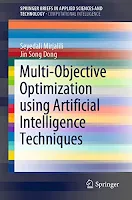Evolution of Artificial Neural Development: In search of Learning Genes
Gul Muhammad Khan ... 139 pages - Publisher: Springer; (October, 2017) - Language: English - ASIN: B076YWYQ38 by Amazon.
This book presents recent research on the evolution of artificial neural development, and searches for learning genes. It is fascinating to see how all biological cells share virtually the same traits, but humans have a decided edge over other species when it comes to intelligence. Although DNA decides the form each particular species takes, does it also account for intelligent behaviour in living beings.
The authors explore the factors that are perceived as intelligent behaviour in living beings and the incorporation of these factors in machines using genetic programming, which ultimately provides a platform for exploring the possibility of machines that can learn by themselves, i.e. that can “learn how to learn”. The book will be of interest not only to the specialized scientific community pursuing machine intelligence, but also general readers who would like to know more about the incorporation of intelligent behaviour in machines, inspired by the human brain.
This book presents recent research on the evolution of artificial neural development, and searches for learning genes. It is fascinating to see how all biological cells share virtually the same traits, but humans have a decided edge over other species when it comes to intelligence. Although DNA decides the form each particular species takes, does it also account for intelligent behaviour in living beings.
The authors explore the factors that are perceived as intelligent behaviour in living beings and the incorporation of these factors in machines using genetic programming, which ultimately provides a platform for exploring the possibility of machines that can learn by themselves, i.e. that can “learn how to learn”. The book will be of interest not only to the specialized scientific community pursuing machine intelligence, but also general readers who would like to know more about the incorporation of intelligent behaviour in machines, inspired by the human brain.



















